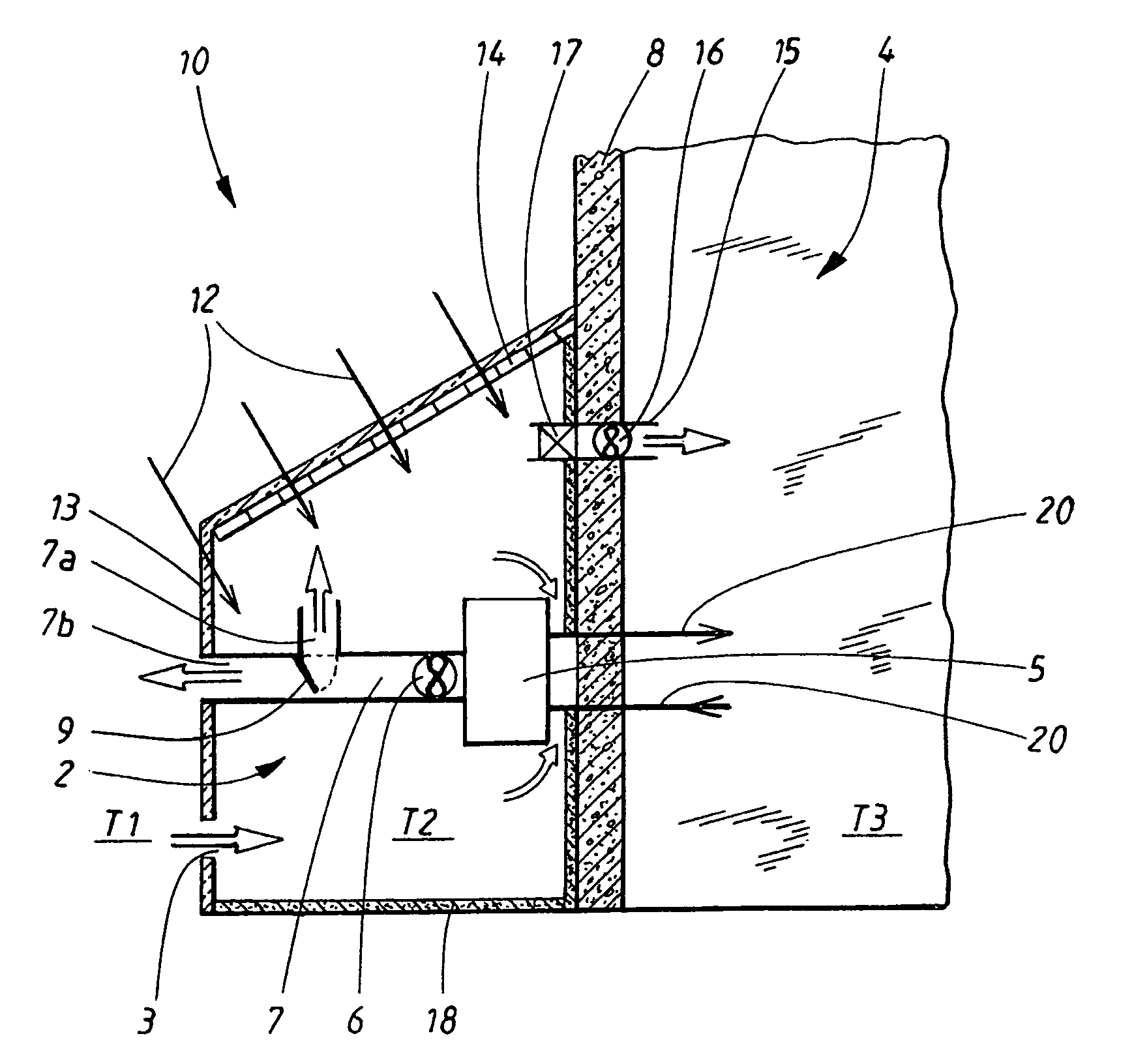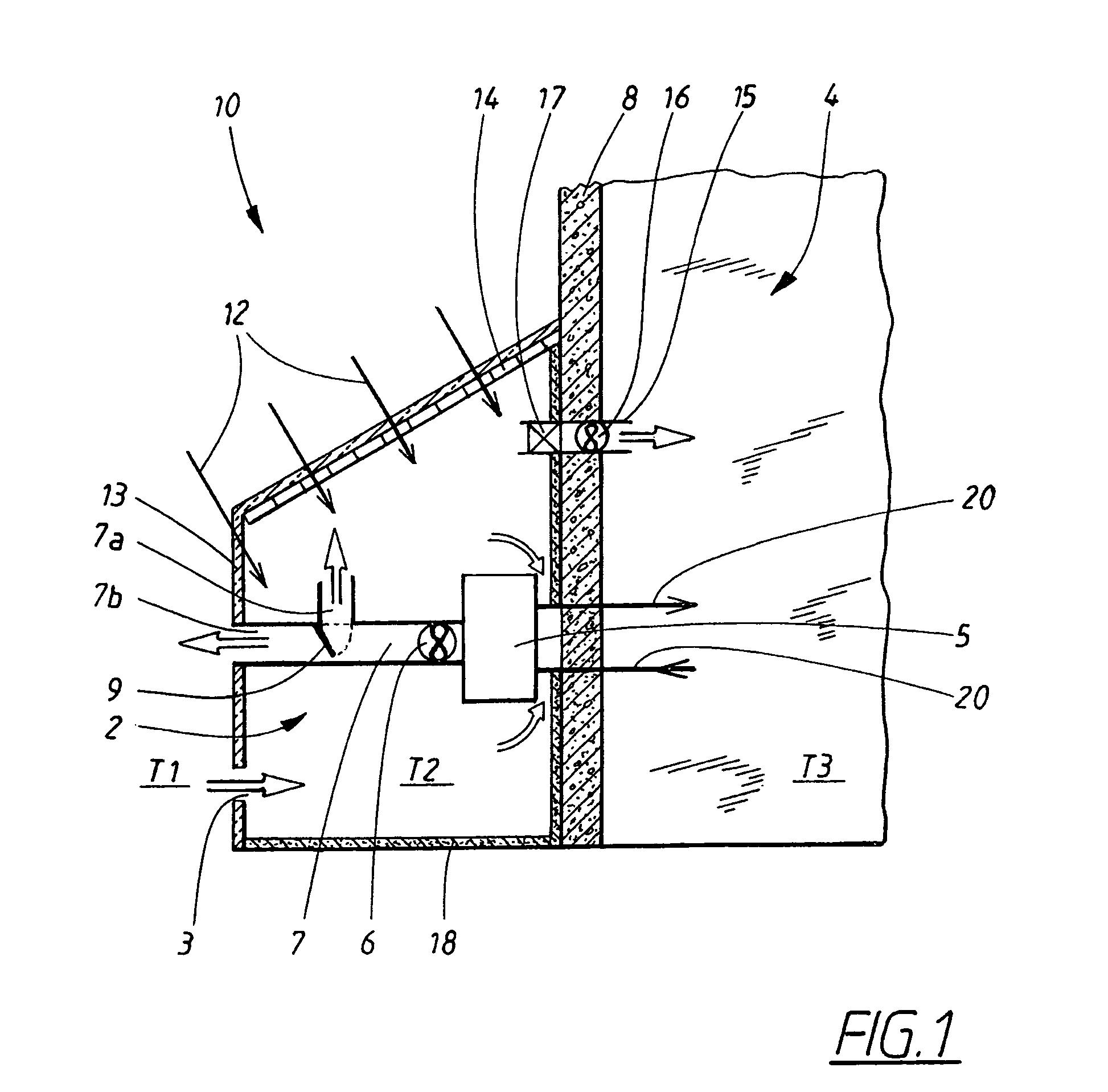Heat pump system
a heat pump and system technology, applied in the field of heat pump systems, can solve the problem that the effect of a heat pump is not normally sufficient to cope with unassisted heating, and achieve the effect of improving the efficiency of a heat pump system
- Summary
- Abstract
- Description
- Claims
- Application Information
AI Technical Summary
Benefits of technology
Problems solved by technology
Method used
Image
Examples
Embodiment Construction
[0015]Depicted schematically in FIG. 1 is a preferred embodiment of a heat pump system 10 according to the invention. A heat pump 5 is so arranged as to take up thermal energy from outdoor air from an external space 2 adapted to permit heating of the outdoor air by the use of solar radiation 12, and to give off thermal energy to a building 4 by heating water. The external space 2 can be in the form of a greenhouse, a glass cupola, a glazed courtyard or some other glazed construction on or in connection to the wall 8 or roof of the building 4. In the conventional way, the heat pump 5 comprises a number of components in the form of an evaporator, a compressor, a condenser, an expansion valve and a cooling medium duct for circulating a cooling medium (which components are not depicted in the FIGURE). The heat pump 5 in turn is arranged in or in conjunction with both the external space 2 and the building 4 in such a way that the air inside the external space 2 comes into contact with th...
PUM
 Login to View More
Login to View More Abstract
Description
Claims
Application Information
 Login to View More
Login to View More - R&D
- Intellectual Property
- Life Sciences
- Materials
- Tech Scout
- Unparalleled Data Quality
- Higher Quality Content
- 60% Fewer Hallucinations
Browse by: Latest US Patents, China's latest patents, Technical Efficacy Thesaurus, Application Domain, Technology Topic, Popular Technical Reports.
© 2025 PatSnap. All rights reserved.Legal|Privacy policy|Modern Slavery Act Transparency Statement|Sitemap|About US| Contact US: help@patsnap.com


